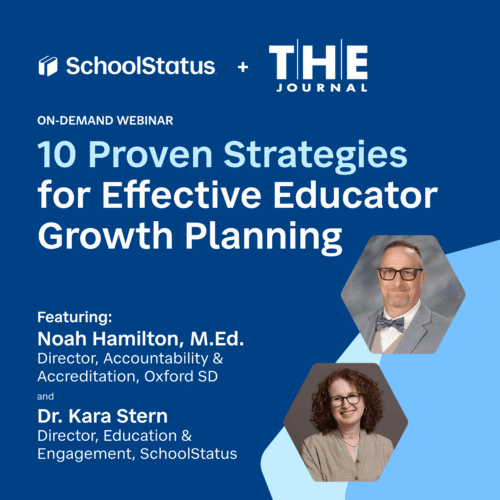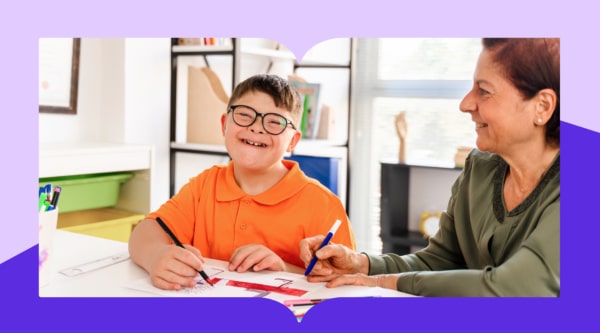

Contemplating the expansion of your instructional coaching practice into special education, or perhaps you’re new to the role? Heather Noncek, an instructional coach specializing in special education in Illinois, delves into the unique considerations, focus areas, goals, and daily experiences associated with this role.
A few years ago, my school district sparked my interest when they added instructional coaches to our roster. A year later, when they added special education instructional coaches, I knew it was something I wanted to pursue. However, being in a brand new role in our school district meant I often had to respond to questions about the position: “Can you explain your role to me again?” and “How is your role different from our building’s instructional coach?”
I’ll dive into the answers to these questions and how my position is both similar to and different from a standard instructional coaching role.
Just What Is a Special Education Coach?
I often find it’s easiest to first explain how similar a special education coach is to a more general IC. We both strive to establish trusting and collaborative partnerships with teachers. We both leverage various forms of professional development, collaborative conversations, and coaching cycles. Most importantly, we primarily work in the classroom with educators to focus on improved student outcomes.
Focus and Goals
The overarching focus of a special education coach, however, may differ from a standard instructional coach. For example, in my current role I have two established goals beyond my instructional coaching peers:
- Increase the instructional capacity of our special education teachers
- Increase the instructional capacity for classroom teachers to allow special education students increased access to learning in the general education setting
Given these additional goals, I tend to look for PD that will support these initiatives. Consequently, much of my reading, podcast listening, and conference attendance tends are in support of those two goals.
The Daily Work
I’ve observed another distinction, wherein teachers frequently approach me to discuss either a particular student with intricate learning needs or a small group of students struggling to meet established learning objectives. My initial work with teachers usually begins from conversations about students who are struggling to meet learning targets, rather than the desire to introduce instructional practices (e.g., workshop models or guided math). This results in frequent requests to observe classrooms and provide feedback.
I tend to model lessons so the teacher can observe their class, followed by a debrief where we plan the next steps. It’s during our debrief that we explore instructional practices to include special education students in different learning opportunities and determine what supports can be introduced to ensure student success.
Collaboration
Beyond my work with individual teachers, I spend a lot of my time collaborating with teams and across buildings. Although my coaching niche is special education, the benefits I receive from working with my peers is unmatched.

Effective Educator Growth Planning
Learn strategies for collaboratively setting meaningful and achievable professional goals aligned with each teacher’s strengths.
Watch NowWorking with Teams
My views on collaboration have shifted since I started working in teams. While I’ve always recognized that collaboration among teachers has a significant role in student learning, I now understand just how critical collaboration is as a component to support students—especially our most complex learners.
Our collaborative practices open up space for all teachers to learn from one another and increase their instructional capacity. While this is a common practice for instructional coaches in general, the makeup of our teams may differ. When we set goals, we look at the whole student to explore inclusive practices. For example, if they have sensory, language, or emotional/behavior needs, we want to be sure that our goals include collaboration with all the teachers who work with that child.
Through our work in teams, everyone has ownership of the goals we establish, and we can collaboratively adjust instructional practices that best support the student.
Working Across Multiple Buildings
I’ve found that almost every special education instructional coach supports multiple buildings. Being spread across multiple buildings can pose a significant challenge as it impacts our ability to support certain projects on a consistent basis. Communication is critical, so one way I combat this is to collaborate with my peers and building leadership as much as possible. I also look to join building-wide PD whenever possible to continuously connect with teachers who I may not see on a daily basis.
Final Note
The work of a special education instructional coach is grounded in the same practice as an instructional coach. While there are additional layers upon which we engage with our work, overall it’s similar to the way an instructional coach at the building level would use their school’s improvement plan to guide their work for the year. We look to collaborate with all teachers in supporting some of our most complex learners.
About Our Guest Blogger
Heather Noncek is a special education instructional coach at the elementary level and has been in education for over 17 years. She began her career in special education as a resource teacher supporting students in kindergarten through sixth grade. During her educational career, she got her Master’s in Literacy Education and even received an EL endorsement.
Recently, Heather decided to take on a new adventure that supports students receiving special services through the instructional coaching model. She works with teachers one-on-one and in small groups to collaborate and plan for inclusion, provide professional development, and to analyze data to plan for instruction.
Stay Connected
News, articles, and tips for meeting your district’s goals—delivered to your inbox.





